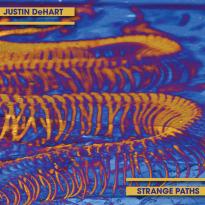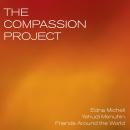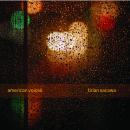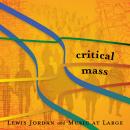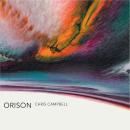Strange Paths
Strange Paths
Greece
| Strange PathsiTunes Artist's PageiTunes Album Page | |||
|---|---|---|---|
| Song Title | Time | Price | |
| 1. | XY | 15:09 | |
| 2. | Psappha | 13:32 | |
| 3. | Bone Alphabet | 11:23 | |
| 4. | They Looked Like Strangers: I. — | 05:40 | $0.99 |
| 5. | They Looked Like Strangers: II. — | 05:51 | $0.99 |
| 6. | They Looked Like Strangers: III. — | 06:12 | $0.99 |
| 7. | They Looked Like Strangers: IV. — | 06:35 | $0.99 |
It’s possible that no instrumental discipline is more demanding on both a technical and physical level than percussion. On Strange Paths, Justin DeHart dives head first into this challenging repertoire and performs the monumental compositions in a lucid and inspired fashion — with careful attention to sound, musical detail and inventiveness. With this expansive release, DeHart offers his audiences informed and visceral examples of the power of percussion to expand our musical awareness.
Composed by Bang on a Can co-founder Michael Gordon, “XY” is a post-Minimalist tour de force for solo percussionist playing five small tuned drums. Each hand follows its own independent musical path from the other.
“Psappha,” written in by iconic Modernist Iannis Xenakis in 1975, highlights the suitability of multiple-percussion in representing opposing forces and violent masses of sound. It remains as one of the few classic compositions for solo percussion.
The extremely dense and polyrhythmic “Bone Alphabet” by erstwhile British composer Brian Ferneyhough is a masterpiece within the New Complexity movement in music. Known as a sort of Mt. Everest in percussion circles due to its astonishing degree of difficulty, DeHart’s performance brings out its organic bounty of beautiful nuances and fascinating colors.
In 2009, DeHart traveled to Baltimore to work directly with composer Stuart Saunders Smith on the four-movement vibraphone solo, “They Looked Like Strangers.” The movements work together to create a lyrical journey that is both familiar – with bits of jazz harmonies and romantic tonal underpinnings - and at the same time extraordinarily out of this world with its plastic range of motion and free association.
DeHart has collaborated extensively with composers: Roger Reynolds, Mark Applebaum; improvisers: Mark Dresser, William Winant, Leo Wadada Smith; and master drummers from abroad: Pandit Swapan Chaudhuri, T.H. Subash Chandran, and Alfred Ladzekpo. He has also worked with a variety of musicians from Wu Man to Cheap Trick.
Dr. DeHart was awarded a Fulbright Scholarship for percussion studies in India (2001) and his talents have been featured at concerts and festivals throughout the United States, Canada and Asia. DeHart is a current member of the – 2012 Grammy Nominated – Los Angeles Percussion Quartet (LAPQ) and is in demand as a freelancer in Southern California.
LUCID CULTURE
"Steadily and ambidextrously, DeHart builds a sonic spectrum ranging from hypnotically soothing, to suspenseful, with many shades in between: it rises to the challenge of entertaining a jaded listener who might not ordinarily gravitate to music made on things meant to be hit with a stick … [On] Stuart Saunders Smith’s four-part vibraphone suite They Looked Like Strangers, … [a] slow, gingerly hazy summery ambience builds to eerie music-box ambience; with its lingering, otherworldly resonances, it draws a straight line back to Bernard Herrmann’s Hitchcock film scores. Then, casually and methodically, DeHart takes it into full-blown, resonant Lynchian menace." [FULL ARTICLE]
PERCUSSIVE NOTES
“[E]xpressive, meticulous, and sonically luxurious. … DeHart’s work is a shining example of a brilliant realization: his palette of sounds and intricate weaving of lines is mesmerizing. … The breathy, undulating, and unpredictable flowing of dissonant harmonies and rhythms in Smith’s music is fully formed and realized here. It comes full circle to the idea that the right music, in the hands of the right performer, can be a powerful vehicle for expression.”
—John Lane
AMERICAN RECORD GUIDE
“Stuart Saunders Smith's ‘They Looked Like Strangers’ is a four-movement, chromatic solo for vibraphone. Justin DeHart's dynamics are superb, though every movement sounds like the background to episodes of the Twilight Zone. The different rhythms and pitches used in Iannis Xenakis's ‘Psappha’ are more my style. With a large range in dynamics and an especially strong sense of melody created by the instruments Justin DeHart chose, his performance of the graphically notated, structure-based ‘Psappha’ is the definite high point of the program.”
—Kraig Lamper
CLASSICAL-MODERN MUSIC REVIEW
“[B]racing music! … DeHart shows great musicality, technical ability and a devotion to realizing each work with care and dramatic verve. … [A] most interesting and rewarding listen.” [FULL ARTICLE]
—Greg Edwards
